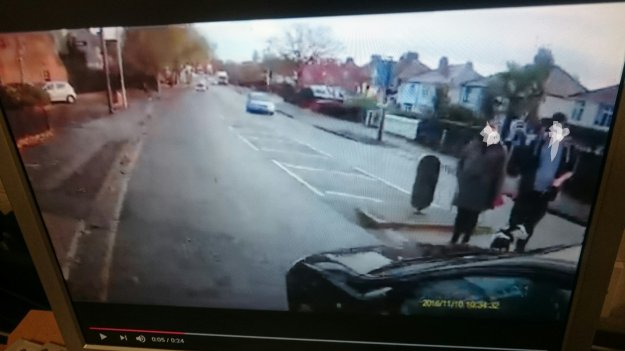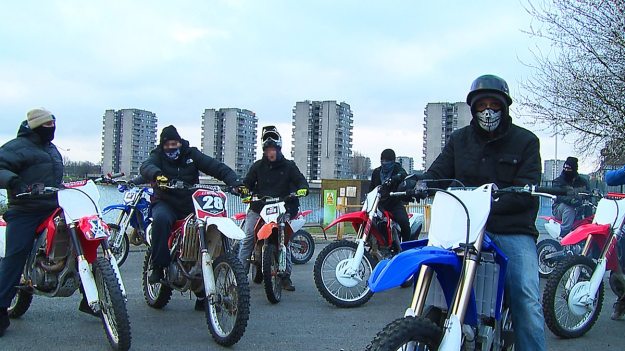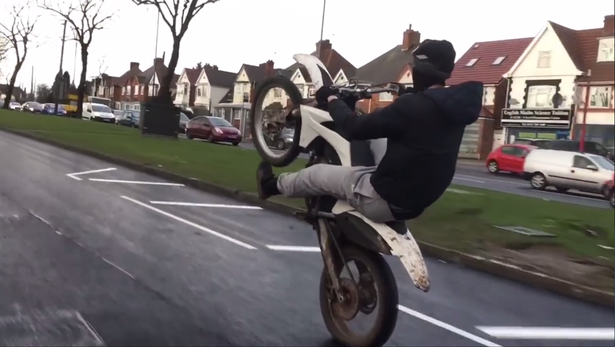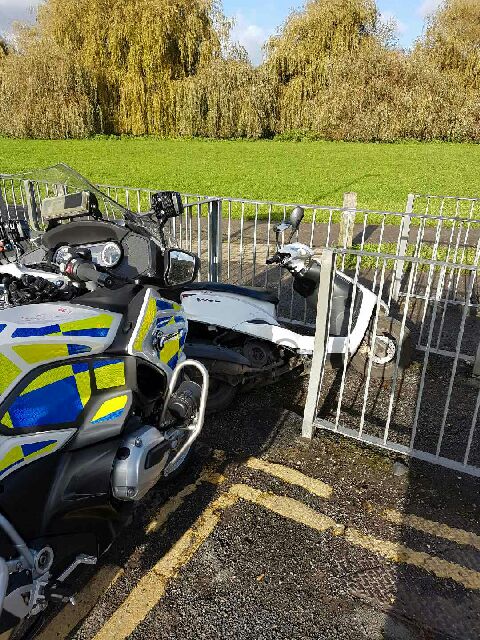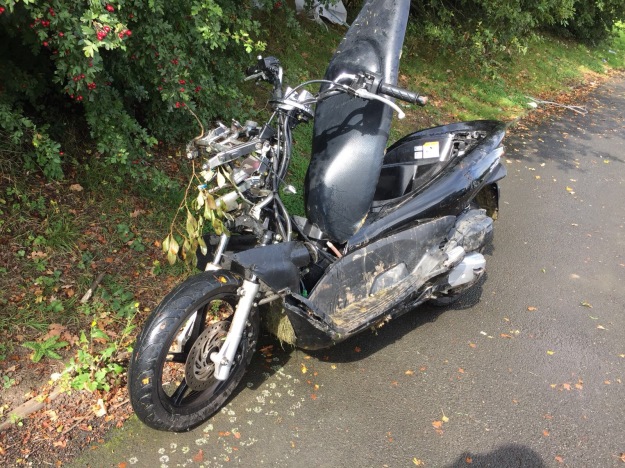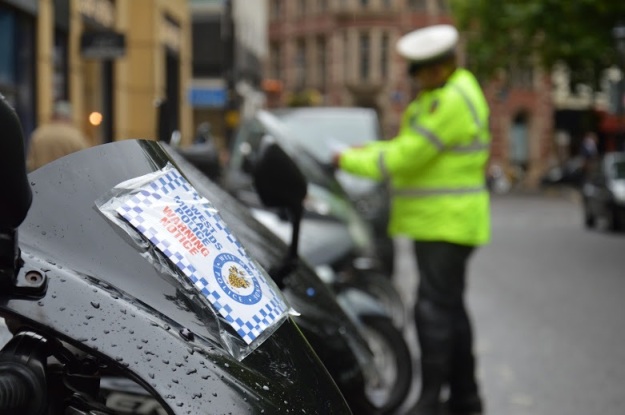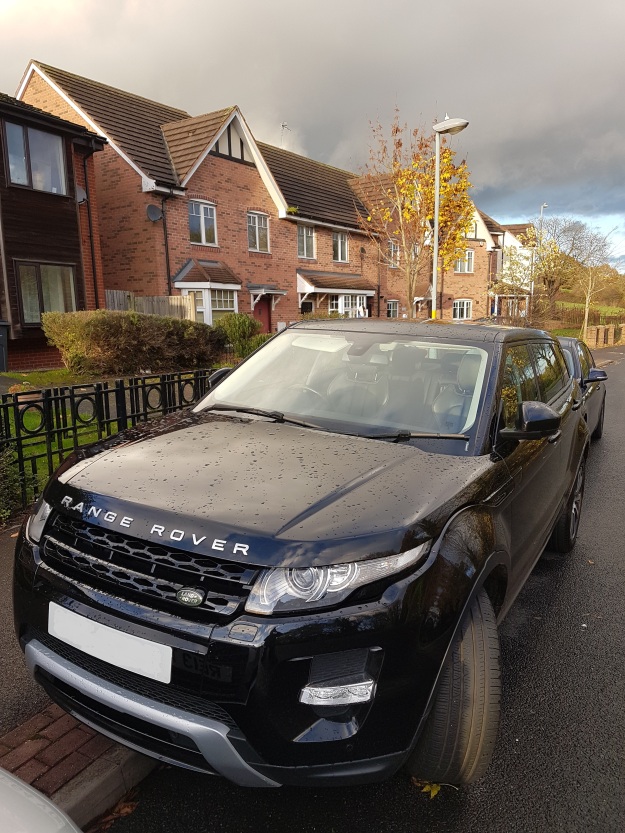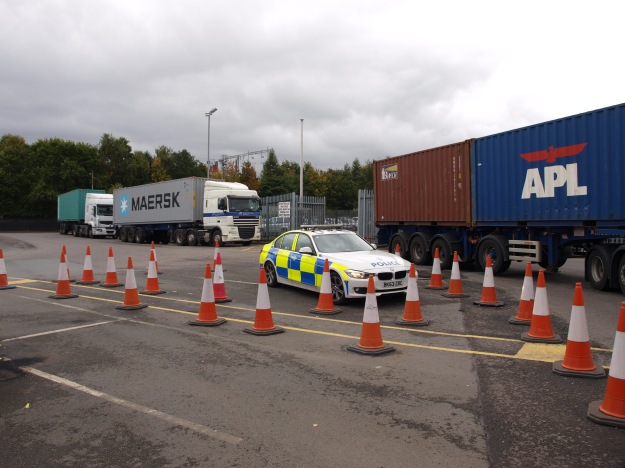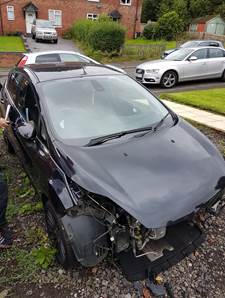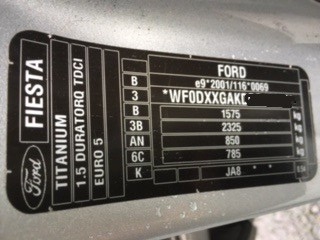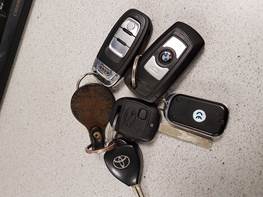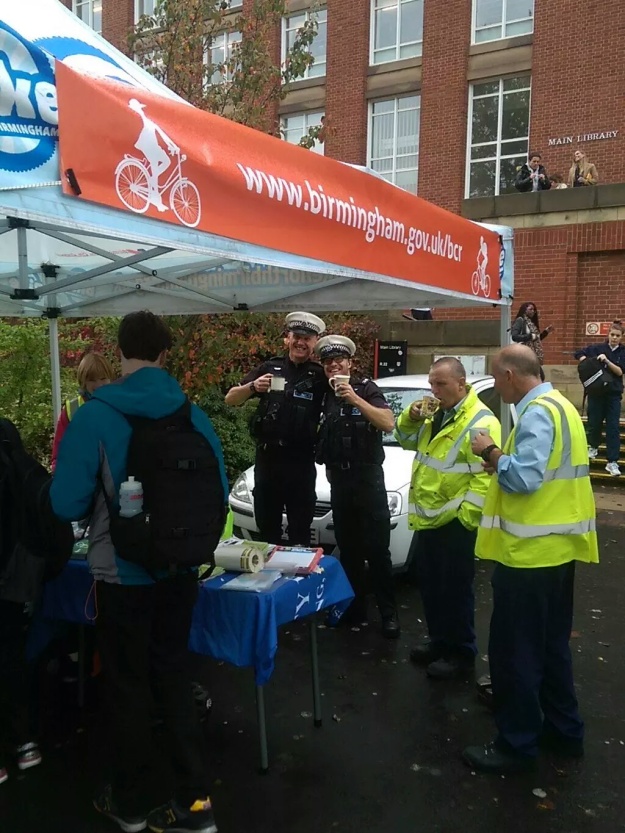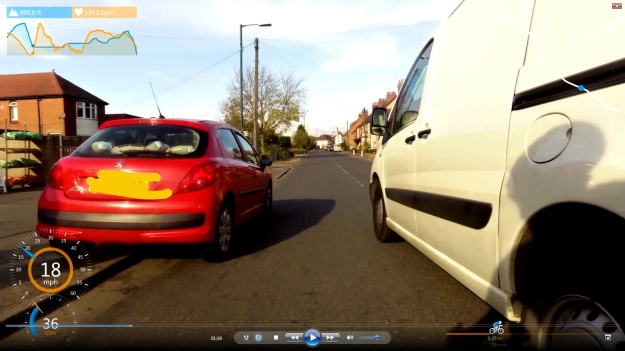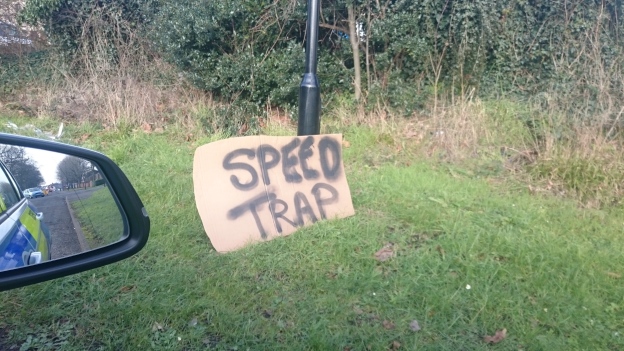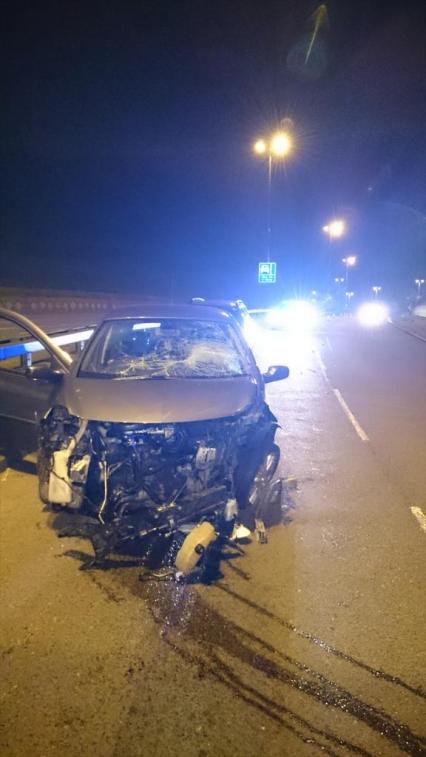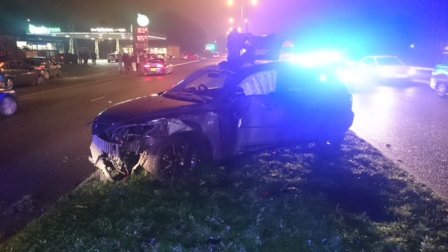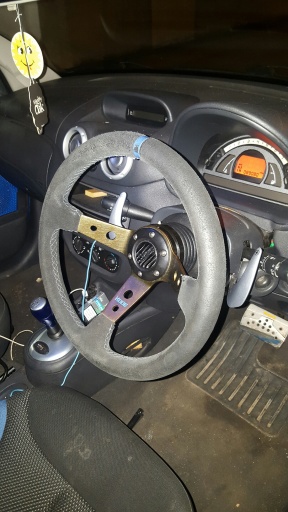The golden age of driving….the beginning of the end
This blogs all about the current state of motoring, not only in our region but nation-wide, and is a wake-up call to all those who think that the golden age of motoring has a future. It’s hard to admit, especially for the likes of ourselves, after all most traffic officers have an emotional attachment to driving and the internal combustion engine in at least one of its inceptions, but the writings on the wall, we are living in the last generations of driving, and with it the last generations of Traffic Officers, at least in their current inception….so grab a brew, a few biscuits and dunk and read away, or drop a few crumbs if you prefer not to dunk. Oh and the soundtrack to read this one to should be a Black Sabbath track as Aston’s finest have called it a day, maybe The Wizard or for the “hard pressed motorists” out there (aka those who can’t drive or ride within the law)…….. Paranoid……

Ahhh, another “trusted” driver fails to uphold their end of the contract
“Pleasure drive” – the ultimate oxymoron?
Hilarious isn’t it the term pleasure drive, is there such a thing anymore? There certainly doesn’t seem to anyone relaxed and enjoying the experience, at best a stressful yet functional part of modern life, at worst a bizarre form of 21st Century mock gladiatorial combat where the participants (supposedly law abiding citizens of the land) exhibit traits and behaviour they would never dream of displaying in any other area of their everyday life. Welcome to the beginning of the end, and as with everything that ends, it is usually down to our own behaviour. This particular extinction event, the demise of the driver is no different.
The end is nigh!
We were trusted with the ultimate responsibility, the task of piloting motorised vehicles, all be it to a strict set of laws and guidelines, necessary due to the damage a motorised vehicle of any size or form can do to the frail human form. Yet we have shown as a collective, us drivers and riders of mechanically propelled vehicles, that we are incapable of carrying the burden and shrug continually the social responsibility of being good law abiding road users. We championed and celebrated all that is good and enjoyable with motor vehicles, the performance, the luxury, everything that made us look beyond the negatives, the current main one being the 5 people who die and 63 who are seriously injured daily on our road network due to the way we pilot them. Not to mention the tens of thousands a year whose early demise is aided by our favourite steel polluting machines, an impact that is now sending serious repercussions throughout the health and transport world. Imagine if you put those 5 people who die daily and 63 who are seriously injured on a train or plane, there would be a national outcry, no one would use such a dangerous form of transport, it’s insane, almost inhuman some might say. But alas it’s the selfish price we continue to pay, a price that could be dramatically reduced if everyone just obeyed the law and showed due respect to each other, but as I have previously mentioned we have proved ourselves incapable of doing this. That is why technology has taken control of the driver’s destiny, and that destiny is the demise of the driver. Manufacturers see this and are striving to be the first to make it work. It’s also part of the answer to congestion and pollution issues, after all your self- driving vehicle will not make the errors of judgement or break the road traffic laws that drivers currently do, reducing collisions dramatically keeping roads running smoothly at the busiest of times, and of course driving in the most environmentally appropriate fashion at all times. Computer controlled vehicles will link in with traffic systems reducing waiting times; they won’t block junctions, roundabouts or crossings. Basically they will do everything the human driver or rider has proven themselves unwilling or incapable of doing. But in the meantime let us explore what those who are minded to do something about the current dire state of motoring can actually do to reduce the horrific cost in death and injury the nation currently demands to keep our road network running.
The Behaviour test
Stand outside a school at the start or end of the school day and watch the behaviour of passing drivers. See how many you can catch with a phone in their hand, speeding and the other multitude of sins we have to deal with daily, but surely this should be where a driver is most cautious, after all the likelihood of a child making the ultimate error is at its upmost at such a location, drivers care….don’t they ?. Then go into the busy city centre with its 24/7 congestion plus thousands of vulnerable road users, cyclists and pedestrians everywhere, again surely the drivers would be paying attention, driving slowly, just in case? Then go onto the rural road, unseen potential hazards everywhere around each corner, horses, cyclists, farm vehicles, do you ever see any driver driving to the conditions before them. How many collisions in rain or fog are due to vehicles being too fast and too close? How many of our children must we lose because people think they can drive a car or ride a motorbike like it’s a video game? It’s all down to driver behaviour, remove the driver, remove the collision, it’s simple, vehicles don’t crash themselves. Some will be reading this and uttering to themselves “It’s just the few, I’m a good driver”, are you? Do you drive like it’s your driving test every day? Do you stay under every speed limit, always signal when you should, use your lights correctly, stop at the amber instead of inanely racing towards it to beat the red, wear your seat belt?, The list is endless when it comes to things supposed “good competent” drivers don’t do. The test is the minimum standard, if you don’t drive or ride to that standard every time you get on the road you are part of the problem, be honest with yourselves…….

So many people to look out for yet most drivers see none of this or chose to ignore, to everyone else’s peril !
Some will say, “why don’t you tell them to pay attention, slow down, take care” well let’s play a game, how many road safety campaigns can you remember….., it’s not hard, we have over a dozen in their various forms a year. We’ve tried to tell them, to educate. We even have a theory and practical test to ensure motorists are fit for the road to reinforce the necessity of complying with the law and having a careful and considerate nature towards our road use. Do the campaigns or test’s effect driver behaviour? we all know the answer. People will read headlines in the national press about families being killed by a driver who used his phone, broke the law, and utter how terrible it was…….. as they travel down the road above the speed limit, phone in their lap with a light out, having never checked their tyre pressures or condition……but they did take the time to have illegal dangerous tints to fitted their drivers windows, or hang something from their rear view mirror that partially blocks their forward view……
Changing behaviour, the tools of the trade
The most effective tool to curtail adverse driver behaviour is the threat of prosecution ,if people think they will be caught doing something they don’t do it, we’ll come onto that later…but first another piece of technology that precedes the driverless car, the insurance black box. Yes that’s right those little black boxes really do work, it would seem that the threat of having your insurance cancelled and suffering a large financial penalty if you drive to a substandard level seems to work, fancy that…..it’s almost like enforcement by the back door, shame that insurance companies don’t make them mandatory really, the effect would be profound, cheaper policies, better driving, insurance monitoring black boxes literally saving lives, contributing to the wellbeing of society………just a thought. And for those who are screaming “it’s just the big brother nanny state telling us what to do and how to live our lives” just remember, drivers were trusted to do the right thing, but alas can’t, just stand at the side of any road with a speed gun and see how many cars actually exceed the speed limit, most do. Some may complain of the nanny state but it’s become increasingly necessary when it comes to motorised road use, just look at the comments by most drivers regards road safety on social media, attitude says a lot about behaviour, if you went on some comments seen on social media regards sharing the road and improving safety you wouldn’t let these people drive a child’s pedal car around your garden, let alone a vehicle on the road with all the risk that carries. You see many like to blame someone else, blame the victim, many just don’t have the attitude or demeanour to be on the road in the first place, modern day personalities and priorities just don’t mix with being in charge of a potential killing machine.
Which leads us nicely back to our definition of the “hard pressed motorist” ….the motorist who is expected to obey the law……..

A speed check at one of the busiest pedestrian crossings in Birmingham, drivers caught at 50 % above the speed limit whilst on their phone, says it all really….
The perfect storm is coming
What’s he on about now I hear you say, well it’s like this, traffic levels are rising at about 1.4% a year. Factor in population growth, of which those in the age bracket most likely to drive is swelled by migration and you see that within 8 years we will have over 10% more vehicles on our roads. Anyone think we’ll have 10 % more road capacity? Imagine the cost for a start, it’s impossible.
So we have more motor vehicles, at the same time we will have more vulnerable road users, as those who are economically excluded from the motor vehicle select club or those who have consciously chosen to “do their bit” and participate in a healthier, cleaner form of transport actually look to take advantage of their local authorities transport plan. You will notice that no local authorities are looking to increase vehicular traffic, to do so would be tantamount to community “self-harming”. The consequence to the driver of this “perfect storm” is more time spent watching a stationary queue of traffic stretching before them, the consequence for those not sat in a vehicle is an increased risk of injury, here’s why ……
You see the modern motor vehicle is a fine feat of engineering, it can be driven into a brick wall at 50mph and the occupants can walk away relatively injury free. This “security” has however endangered vulnerable road users where it protects the driver. Drivers with their subliminal feeling of safety relax, pay less attention, start practicing poor driving, they speed, don’t pay attention, release their frustration that’s been compounded by sitting in slow moving or stationary traffic with an aggressive driving demeanour, all to the detriment of vulnerable road users. Just look at how may don’t wear a seatbelt properly or at all, this is the best evidence of how safe most feel inside a modern vehicle. Given our increasing levels of both vehicular traffic being driven to an ever poorer standard and more vulnerable road users in a finite area of road we are left with only one inevitable consequence, more vulnerable road users killed and seriously on our roads, in contrast to those in vehicles who become safer in heavy traffic due to reduced collision speeds. Now as a police force we are duty bound to protect the vulnerable, pedestrians, child and elderly pedestrians especially, those making socially beneficial transport choices such as cyclists, we are duty bound to support our communities transport policies and do all we can to create an environment where they can succeed. The long and short of it is drivers, who pose the greatest threat of harm on our roads need to get their house in order, or we’ll do it for them.
Twenties plenty and the car vs pedestrian
Why 20mph limits? Well because firstly it cuts down dramatically the numbers killed and seriously injured on our urban roads, quite simply it gives drivers and other road users the time needed to first make the correct driving decisions and second react to others mistakes, i.e. that child who suddenly runs into the road or the vehicle that pulls out in-front of you. If nothing else it lessens the seriousness of any collision. 20mph is not far below the average speed for many of our urban roads anyway so time wise drivers are not really losing out either, even if they were, small price to pay to lessen the carnage on our roads surely…..now don’t be selfish drivers after all you only get to the back of the next traffic jam fractionally quicker! Plus it won’t be long given the rising congestion levels before we reach the capital’s average speed of 7.5mph!! So just think in a few years a 20mph limit will be literally be light speed compared to the average speed of traffic on our roads.

Many will say that no one drives to Birmingham’s new 20mph limits, this is true many don’t, but they will. Despite a highly publicised campaign of educational measures including roadside educational alternatives to prosecution we get numerous complaints and too often see the effects of drivers exceeding the limit. So “Out goes the carrot and in comes the stick”, after nearly 6 months of the limits it’s apparent that many drivers just don’t care or are incapable of driving to the new limit, just like they can’t drive to most limits, including the old 30mph limits. Again we come back to the previously stated situation where drivers proved themselves incapable collectively of driving at 30mph or below, you had your chance now 20mph limits are deemed necessary to protect our communities from drivers who don’t meet the standard of “safe and competent road users”. We need somewhere in the region of one in four compliance for the limits to be effective given urban traffic levels, the one in four slow everyone else down and produce safer roads. We will achieve this through enforcement, we will even use covert speed checks if necessary in the most vulnerable of locations, the loss of life on our regions roads is unacceptable to our communities, some drivers may be dismayed and distraught at the idea of us getting all “sneaky” to catch dangerous drivers, but they had their chance, “the gloves are off” as they say when it comes to the fight against the dangerous motorist in our region. But remember those who can drive to the required standard, “the law abiding motorist” have nothing to worry about, quite the opposite their journeys should become more pleasant as a result. Whilst we are on the subject our region does have some very good drivers, our plain clothes cyclists used in #OpClosePass have been overtaken by tens of thousands of very good, considerate drivers on our regions roads, and they are in the majority and should rest easy in the knowledge that we target only those who pose a threat, those doing the speed limit, not using their phone, not driving without due care and attention never get stopped, funny that………and they never complain when we start prosecuting those who do not comply with the law either, only poor incompetent drivers complain about enforcement campaigns, because they are the ones who are the problem and need to worry.

Analysis of KSI data shows that drivers are not paying attention at vulnerable locations.
And for those who say “traffic cops, nothing better to do…” your right…..we haven’t got anything better to do…….reducing the amount of people killed and seriously injured on our roads is at the top of our list of priorities, so why would we do anything else ?
Our 2017 wish list
If we could change anything to make this year better than the last, these would be top of our road safety wishlist….it is representative of the personal opinions of myself and my colleagues, not the West Midlands Police, though you would be hard pressed to find anyone in our organisation who would disagree.
Points don’t mean prizes !!
12 points is hard to get for a competent safe driver, in fact they don’t get anywhere near. Some pick up 3 at some point during their driving when they switch off and fall below the expected standard, triggering a speed camera or the like, or some might have to attend an educational course when their driving again slips below the expected standard. It serves as a wakeup call to most that their driving and awareness isn’t up to the required standard and they rarely trouble the Traffic Process Office again. So to get to twelve points shows a real inability to drive to a safe and competent level. 12 points should result in disqualification, the farce of letting drivers continue past 12 points for whatever reason is an affront to those who have lost loved ones to drivers who regularly break the law, time it stopped.
Disqualification = mandatory retest
In order to get disqualified from driving you will have had to show a continued disregard for the law or a single act of such magnitude that a court feels you must lose your licence for a period of time. Either of these scenarios shows that such a driver clearly does not have the correct demeanour, responsibility, ability or attitude to be a safe and competent driver and as such is a risk to the safety of everyone else on the road. Surely then given this they should be all be retested as a result, they have clearly displayed the inability to be a safe responsible road user, only a retest can ensure they once again, following their disqualification be deemed fit to be a safe licence holder once again. Courts can impose a disqualification until test passed, we would like to see it imposed for all disqualifications under all circumstances. After all we revoke the licences of new drivers who reach 6 points in their first 2 years of driving resulting in a retest, why not do the same for those who reach 12, or are disqualified for a single offence. By taking a theory test and practical test only then can they prove they are once again at the level that is both practically and mentally suitable to be in charge of a mechanically propelled vehicle on our roads.

You are a huge threat to others when behind the wheel, drivers need to wake up to that fact and drive accordingly ! A wholesale change in driving attitudes is required.
Reduce the drink drive level
It’s been a success in Scotland, is any other reason needed to follow suit ?, and although this will cause great dismay to many Brexiteers Europe also has the same level as Scotland with no issues making the roads safer all. It’s about time we woke up and caught up, a reduction in the drink drive level leaves no uncertainty such as the situation we have currently where people think its okay to have one or two and drive. The correct amount to drink when driving is nothing, anyone who thinks otherwise again displays all the qualities that lead to the innocent dying on our roads. Once again our drink drive level is yet more evidence as to our prevailing attitude towards road safety in our country.
A change in attitude
If I was to say we have a problem with a “Top Gear” mentality its’s not an intentional slight on the programme, it’s a scenario where the selfish, inconsiderate attitude of a motorist takes precedence over the safety of others. This is clearly displayed all too regularly on our roads, it need s to stop. We need caring considerate motorists who display all the traits that prove they are responsible road users. Our vulnerable road users need to come first, those whose choice of transportation is environmentally friendly, reduces congestion, leads to a healthier lifestyle lessening the burden on other public services are doing everything right, everything society asks of them, the motorist, all be it under some circumstances with no alternative, is doing the opposite. Expect in the coming years road safety practitioners to increasingly look to protect and promote those transport choices currently considered vulnerable by making them safe, secure and desirable transport choices. Motorists are going to have to get used to this and the changes in their behaviour and road use it will bring, a change in attitude and an acceptance of no longer being the priority on our road system will be needed.
So that’s where we are, this blogs been a bit of a “scene setter” if you like for what you will see over the next few years. Anyone who thinks differently really does have their head in the sand, if you don’t believe me, have a look at your local transport plan, you will see that vehicles and drivers have no place anymore in our transport solutions, at least not until the driver is finally extinct, having being replaced by a computer and all our vehicles are cleaner and more efficient to the point where they no longer negatively impact on our communities. In an age where we are building record numbers of vehicles in this country we are no longer building roads for them, quite the opposite, all major transport investment is rail, cycle or pedestrian focused.
In the meantime when we do drive our vehicles we must remember that when we do we pose a greater threat to other people than at any other point in our existence. The motor vehicle is a far more destructive and efficient weapon than the gun, remember that next time you drive or ride. If someone handed you a loaded gun you would handle it with the upmost care, do the same in your motor vehicle, because if you don’t, the results are pretty much the same.
At the start you will have read “The Beginning of the End” and it is just the beginning, there’s a good few more years of people being able to drive yet before the technology is ready to take over completely, until we get there let’s make it as painless as possible, take great care when you’re out there, because remember it’s at this point in your daily existence you are the greatest threat not only to yourself, but everyone one else on that road.
For those who have read this and are distraught at the thought that the days of driving are numbered listen to one last Black Sabbath track……”It’s alright”….and remember you can always drive however you like on your games consoles 😉
In the next few blogs we’ll look at enforcing the new mobile phone penalties due in March, our new Operation to protect all vulnerable road users at collision hotspots OpSaferCrossing, and everyone’s favourite insurance, it’s scams, the uninsured, the falsely insured and we’ll also focus on the insurers, and how some companies aren’t really helping a worsening situation.
